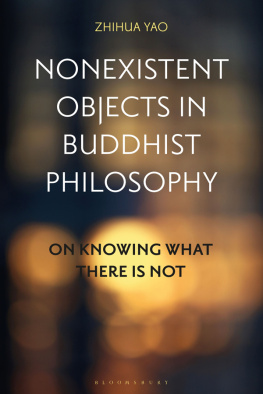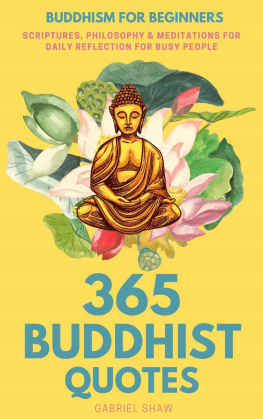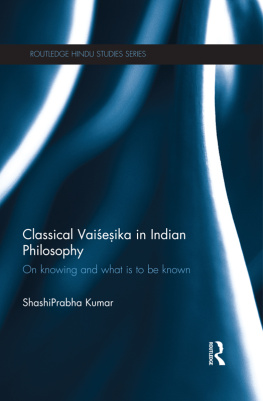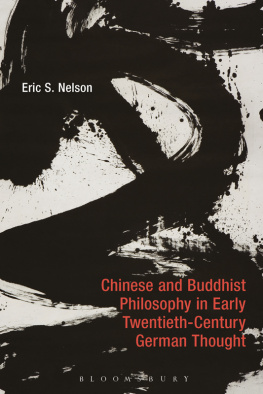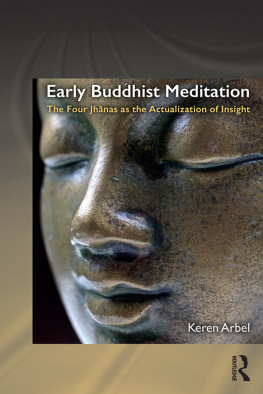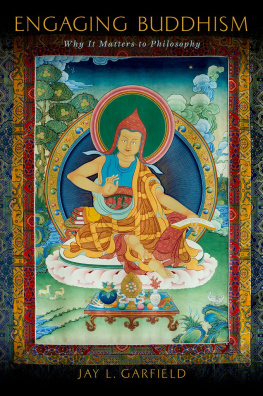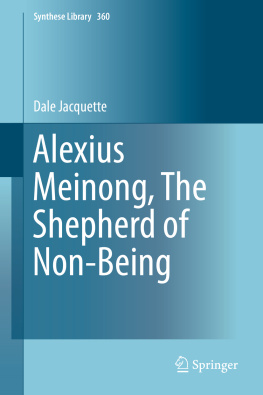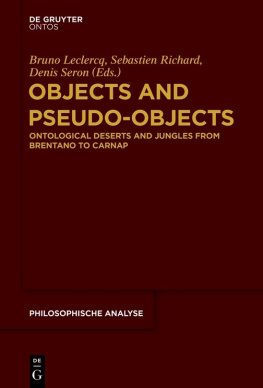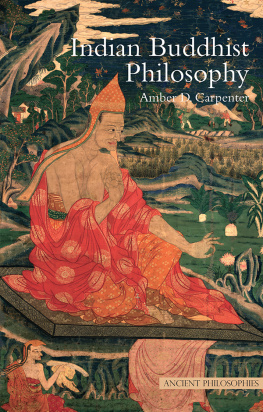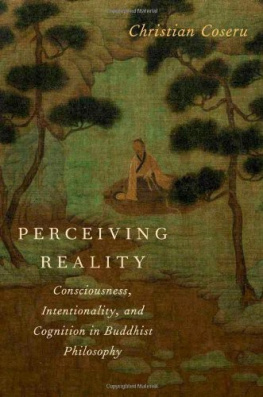Zhihua Yao - Nonexistent Objects in Buddhist Philosophy: On Knowing What There is Not
Here you can read online Zhihua Yao - Nonexistent Objects in Buddhist Philosophy: On Knowing What There is Not full text of the book (entire story) in english for free. Download pdf and epub, get meaning, cover and reviews about this ebook. year: 2020, publisher: Bloomsbury Publishing Plc, genre: Religion. Description of the work, (preface) as well as reviews are available. Best literature library LitArk.com created for fans of good reading and offers a wide selection of genres:
Romance novel
Science fiction
Adventure
Detective
Science
History
Home and family
Prose
Art
Politics
Computer
Non-fiction
Religion
Business
Children
Humor
Choose a favorite category and find really read worthwhile books. Enjoy immersion in the world of imagination, feel the emotions of the characters or learn something new for yourself, make an fascinating discovery.
- Book:Nonexistent Objects in Buddhist Philosophy: On Knowing What There is Not
- Author:
- Publisher:Bloomsbury Publishing Plc
- Genre:
- Year:2020
- Rating:3 / 5
- Favourites:Add to favourites
- Your mark:
- 60
- 1
- 2
- 3
- 4
- 5
Nonexistent Objects in Buddhist Philosophy: On Knowing What There is Not: summary, description and annotation
We offer to read an annotation, description, summary or preface (depends on what the author of the book "Nonexistent Objects in Buddhist Philosophy: On Knowing What There is Not" wrote himself). If you haven't found the necessary information about the book — write in the comments, we will try to find it.
Zhihua Yao: author's other books
Who wrote Nonexistent Objects in Buddhist Philosophy: On Knowing What There is Not? Find out the surname, the name of the author of the book and a list of all author's works by series.
Nonexistent Objects in Buddhist Philosophy: On Knowing What There is Not — read online for free the complete book (whole text) full work
Below is the text of the book, divided by pages. System saving the place of the last page read, allows you to conveniently read the book "Nonexistent Objects in Buddhist Philosophy: On Knowing What There is Not" online for free, without having to search again every time where you left off. Put a bookmark, and you can go to the page where you finished reading at any time.
Font size:
Interval:
Bookmark:

NONEXISTENT OBJECTS IN BUDDHIST PHILOSOPHY
NONEXISTENT OBJECTS IN BUDDHIST PHILOSOPHY
On Knowing What There is Not
ZHIHUA YAO

BLOOMSBURY ACADEMIC
Bloomsbury Publishing Plc
50 Bedford Square, London, WC1B 3DP, UK
1385 Broadway, New York, NY 10018, USA
BLOOMSBURY, BLOOMSBURY ACADEMIC and the Diana logo are trademarks of Bloomsbury Publishing Plc
First published in Great Britain 2020
Copyright Zhihua Yao, 2020
Zhihua Yao has asserted his right under the Copyright, Designs and Patents Act, 1988, to be identified as Author of this work.
For legal purposes the constitute an extension of this copyright page.
Cover design: Louise Dugdale
Cover image: Katrin Ray Shumakov / Getty images
All rights reserved. No part of this publication may be reproduced or transmitted in any form or by any means, electronic or mechanical, including photocopying, recording, or any information storage or retrieval system, without prior permission in writing from the publishers.
Bloomsbury Publishing Plc does not have any control over, or responsibility for, any third-party websites referred to or in this book. All internet addresses given in this book were correct at the time of going to press. The author and publisher regret any inconvenience caused if addresses have changed or sites have ceased to exist, but can accept no responsibility for any such changes.
A catalogue record for this book is available from the British Library.
A catalog record for this book is available from the Library of Congress.
ISBN: HB: 978-1-3501-2147-8
ePDF: 978-1-3501-2148-5
eBook: 978-1-3501-2149-2
To find out more about our authors and books visit www.bloomsbury.com and sign up for our newsletters.
ALSO AVAILABLE FROM BLOOMSBURY
Chinese and Buddhist Philosophy in Early Twentieth-Century German Thought , by Eric S. Nelson
Confucian Ethics in Western Discourse , by Wai-ying Wong
Cultivating a Good Life in Early Chinese and Ancient Greek Philosophy , edited by Karyn Lai, Rick Benitez and Hyun Jin Kim
Natural and Artifactual Objects in Contemporary Metaphysics , edited by Richard Davies
Realisms Interlinked , by Arindam Chakrabarti
CONTENTS
I began working on some of the ideas advanced in this book more than a decade ago. Over the years, I have benefited from exchanging ideas with many colleagues and friends, especially Achim Bayer, Ven. Dhammajoti, Toru Funayama, Shoryu Katsura, Birgit Kellner, Gereon Kopf, Chen-kuo Lin, Dan Lusthaus, Andrew McGarrity, Bo Mou, Liangkang Ni, Graham Priest, Qingjie Wang, Guang Xing, and the late Lester Embree. This work was supported by the Academy of Korean Studies (KSPS) Grant funded by the Korean government (MOE) (AKS-2012-AAZ-2102). My special thanks to Jeson Woo for his encouragement.
Some chapters of the book appeared in their early versions as journal articles in Journal of Indian Council of Philosophical Research 25.3 (2008): 7996 (). I thank the editors and publishers for permission to include the revised version of these works in the current book. My thanks also go to two anonymous reviewers for their encouragements and constructive remarks, and to Colleen Coalter and Becky Holland of Bloomsbury for making the publication process smooth.
Ever since Leibniz, the fundamental question of metaphysics has been: Why is there something rather than nothing? But before we can start to ponder on this problem, we should have some sense of the meanings of being (or what there is) and nothing (or what there is not). Philosophers throughout history have devoted themselves to these two subjects by developing the field of ontology. If, however, we are not satisfied with traditional speculative metaphysics, we could ask a more fundamental question, that is, How do we know what there is or what there is not? While the question How do we know what there is? makes perfect sense and has helped to plant the fruitful field of epistemology, the question How do we know what there is not, or nonbeing? encountered skepticism from the very beginning. A natural and even more fundamental question is: Can we know what there is not? or How is it possible to know what there is not? In other words, we need to ask whether we could possibly know nonbeing.
A group of Western and Asian philosophers answered no to this question. They denied the possibility of knowing nonbeing by claiming that thought and being are the same (Parmenides) or whatever that is knowable ( jeyatva ) is existence or being ( astitva ) (Vaieikas, Sarvstivda Buddhists). This extreme view that expels nonbeing or nonexistence from the realms of knowledge and ontology has been influential in the history of Western and Eastern philosophy and developed into different varieties.
An apparent alternative answer to the question of whether we can know what there is not is yes. A quick assertion to support this answer is that whatever that is knowable includes both being and nonbeing, hence thought equals being plus nonbeing. In this way, we have made knowability ( jeyatva ), or potential intentional objects, a more fundamental ontological concept than being or nonbeing. On this view, we can know nonbeing, or what there is not, as well as we know being, or what there is. But the issue is how to prove this assertion. Meinong has famously justified the ontological status of nonbeing by distinguishing thus-being ( Sosein ) from being ( Sein ). According to him, one can meaningfully talk or know the thus-being or characteristics of a nonexistent object without committing oneself to the being or existence of this object.
Several Buddhist philosophical schools also attempted to prove this view of the knowability of nonexistents by developing various arguments against the extreme view of their main opponent, the Sarvstivdins. The Sarvstivda Buddhists proposed their famous argument for the existence of the past and the future, which can be formulated as follows:
Whatever is knowable is existent.
The past and the future are knowable.
Therefore, the past and the future exist.
To support premise 1, the Sarvstivdins refer to a theory of cognition commonly accepted by major Buddhist schools. That is, a cognition is possible with two conditions, a basis (i.e., sense) and an object (i.e., the knowable), and both act as generating conditions ( janaka-pratyaya ) of the cognition. Since a nonexistent cannot produce anything, it cannot be a generating condition of cognition and hence is not an object of cognition. Therefore, whatever is knowable or an object of cognition, it must be existent. There are some other arguments for the existence of the past and the future from metaphysical and soteriological grounds, but this epistemological argument is the most intriguing one, which has aroused much debate.
Other Buddhist schools (including Mahsghika, Yogcras, and Sautrntikas) do not accept the existence of the past and the future, so they have to find ways to refute this rather powerful argument. They do not dispute much on premise 2; instead they focus on refuting premise 1 by arguing that nonexistence is also knowable, hence the concept of the cognition of nonexistent objects. But how to prove this assertion? Similar to Meinong who distinguishes between thus-being and being, the Buddhists take a key step in distinguishing between generating condition ( janaka-pratyaya ) and condition in a quality of object ( lambana-pratyaya ). An object is one of the two basic conditions for the arising of cognition, but it does not have to be its generating condition; instead, it can be a condition in the sense of object only. A nonexistent apparently cannot produce anything, so it cannot be a generating condition of cognition. But if this distinction holds, then a nonexistent can still be a condition of cognition in the quality of object, hence the cognition of nonexistent objects is established. This way, they have refuted premise 1, and, as a result, conclusion 3 is falsified.
Next pageFont size:
Interval:
Bookmark:
Similar books «Nonexistent Objects in Buddhist Philosophy: On Knowing What There is Not»
Look at similar books to Nonexistent Objects in Buddhist Philosophy: On Knowing What There is Not. We have selected literature similar in name and meaning in the hope of providing readers with more options to find new, interesting, not yet read works.
Discussion, reviews of the book Nonexistent Objects in Buddhist Philosophy: On Knowing What There is Not and just readers' own opinions. Leave your comments, write what you think about the work, its meaning or the main characters. Specify what exactly you liked and what you didn't like, and why you think so.

